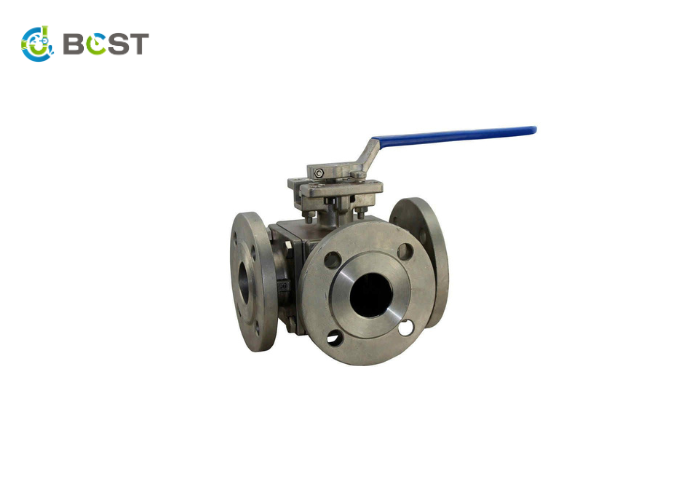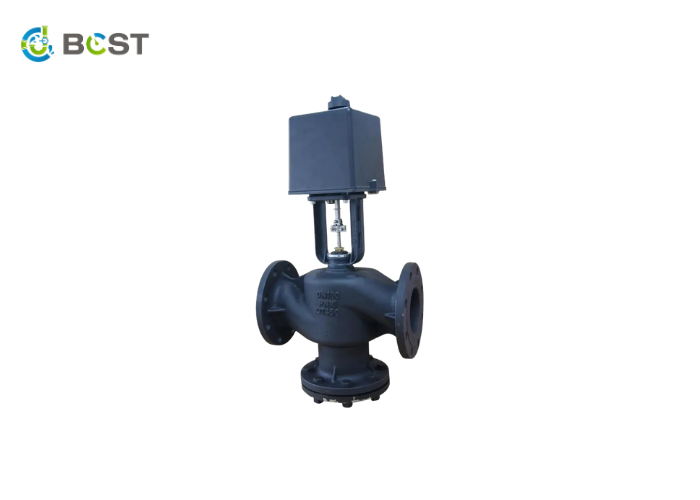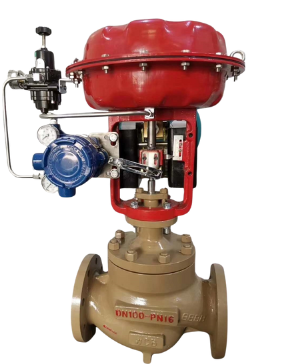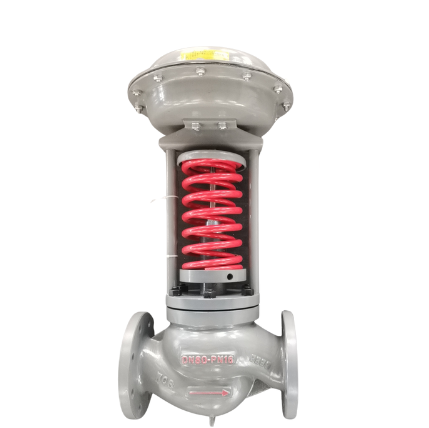
In the intricate web of industrial processes, the efficiency and precision of fluid control play a pivotal role. At the heart of this control lies a fascinating engineering marvel – the actuated valve. Imagine a device that seamlessly regulates the flow of liquids or gases, responding to signals with precision and speed. This is the realm of actuated valves, where advanced technology meets the fundamental principles of fluid dynamics.
What is an Actuated Valve?
An actuated valve is a type of valve that incorporates an actuator, which is a mechanism responsible for opening and closing the valve. The actuator can be manually operated, electrically powered, or driven by pneumatic or hydraulic systems. The purpose of the actuator is to automate the control of fluid flow through the valve, allowing for precise regulation and remote operation.
The key components of an actuated valve include the valve body, which controls the flow of fluid, and the actuator, which provides the force or energy to move the valve. The actuator receives signals or commands, either manually or through an automated control system, and translates them into mechanical movement to open or close the valve.
Their automation capabilities make them suitable for applications where precise control, remote operation, and efficient fluid management are essential. The specific type of actuated valve (electric, pneumatic, hydraulic) depends on the application requirements and the available resources in a particular industrial setting.
How Does an Actuated Valve Work?
Actuated valves typically operate as an on/off switch to allow or prevent fluid flow. If the process requires it, they may provide partial flow allowance. Fluid flow regulation is critical in any modern process system. Actuated valves guarantee that the fluid is properly sealed and distributed throughout the system.
An actuated valve operates by manual, electrical, pneumatic, hydraulic, self-actuated, or spring force. These valves are typically used in process systems requiring open and close operations.
Engineers must guarantee that the actuated valve uses the right manner of actuation.
Torque and accessibility requirements are also important decision criteria.
Types of Actuated Valves
Several different types of actuated valves exist, such as manual, electrical, pneumatic, hydraulic, self-actuated, and spring
Manually Operated
Manual action by a plant operator causes the valve to actuate, whether by a handwheel, gears, or lever. This method provides one of the most accessible means of actuation; however, it loses practicality for valves situated in hazardous locations, out of an operator’s reach, with many turns required to open/close the valve, and with excessive torque requirements. It typically provides a good fit for applications in inaccessible, non-hazardous locations that require infrequent operation.

Electrical Actuation
The major means of actuation in this sort of actuation is electricity. There are various methods for utilizing electricity to enable opening and closing. In one configuration, an electrical actuator moves the valve via an electric motor.
A solenoid can also be used to open or close a valve.
The control valve, a third type, provides for precise positioning of the valve between fully open and totally closed settings depending on the modulation of an electrical signal.

Pneumatically Actuated
This actuation method uses gas, or air, to apply external pressure to a piston housed in a closed cylinder or diaphragm to open or close the valve fully. The process is controlled by circuitry that controls air signals or a manual switch.

Hydraulic Actuated Valves
To operate the valve, hydraulic fluid, often oil acts on a piston. This type of actuation operates similarly to pneumatic with fluid pressure creating thrust that works on the piston.
Self-Actuated Valves
The system medium is used to move the valve in these valves. They do not require any additional input, unlike pneumatic and hydraulic actuated valves. The self-actuated valve is simple in design and is intended to maintain a set-point pressure. Relief valves, safety valves, and check valves are examples of self-actuated valves.

Spring Actuated Valves
The spring-actuated valve is intended for single use only. A spring releases and the valve activates when a specified event occurs, such as over-pressurization or power failure. Depending on the configuration, the spring-actuated system is sometimes referred to as self-actuation. The spring actuation, on the other hand, may be external to the valve, whereas the self-actuation setup is totally self-constrained. Because it cannot be reset after usage, the spring is only useful once.
While a solenoid valve is technically an actuated valve, the functioning of a solenoid valve is frequently likened to that of an actuated valve.
The term actuated refers to the fact that the valve can be started in any way. In contrast, fully automatic solenoid valves have no manual mechanisms. Their opening and closing are determined by either AC or DC voltage.
A small opening in the body of a solenoid valve opens and closes to allow or stop flow. A plunger in the body causes the opening to open or close by moving upward and downward. This energizes the coil and brings the cycle to a close.
Hydraulic, pneumatic, and solenoid actuators, in general, give the fastest actuation. However, due to their high size and power requirements, solenoids are only practicable for big valves. Furthermore, hydraulic and pneumatic actuators necessitate the use of a system to provide hydraulic or pneumatic energy. In either scenario, the actuation speed can be adjusted by inserting appropriately sized orifices in the hydraulic or pneumatic lines.
Actuated Valve | Solenoid Valve |
Most options are slower acting than a solenoid valve | Speedy acting
|
Manual, electrical, pneumatic, hydraulic, self-actuated, and spring | AC or DC supply power in various voltages
|
High back pressures and inlet pressures are permissible | Size and design constraints on back pressure and intake pressure |
Very high flow rates w/low pressure drop | Lower flow |
Manual override | No manual override |
Actuated Valve vs. Control Valve
A subset of actuated valves are control valves. A control valve is an actuated valve that employs precise electrical impulses to position the valve in a specified spot, allowing for a high degree of flow control. In response to voltage input, the controller either opens or closes the valve.
At specified fixed points, a control valve controls and regulates the flow of a liquid. These points may include density, flow rate, pressure, temperature, or liquid level, and it has a valve body and actuator, which is positioned in the body assembly.
In contrast to actuated valves, which typically provide a simple on/off functionality, control valves offer precise flow control and may cycle according to an integrated PLC control system’s requirements.
The control valve possesses the following characteristics:
- They provide quick responses.
- A signal is generated through a controller
- They have flow characteristics directly related to valve opening






